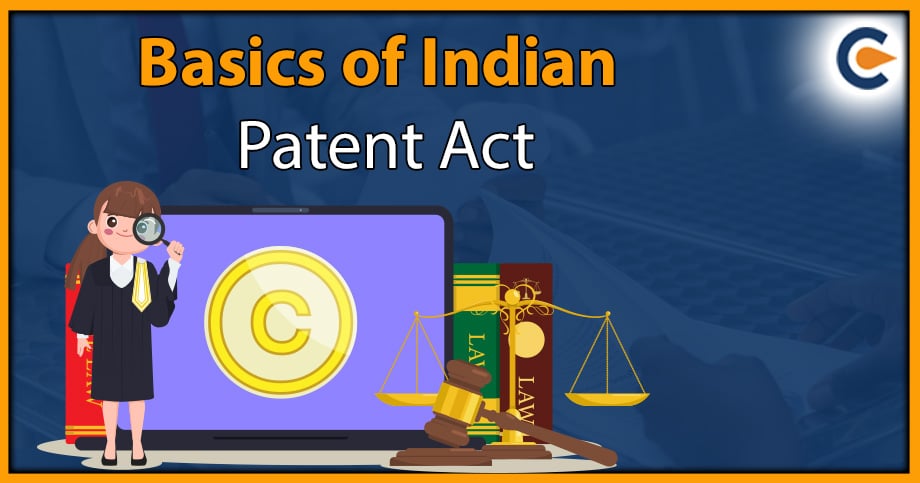The laws that control the granting of patents in India are contained in the Indian Patent Act. It is essential to protect the rights of innovators and make sure that their creative ideas are valued and rewarded. The statute describes how to apply for a patent and specifies the exclusive rights that come with being a patent holder. We will explore the fundamentals of the Indian patent act, its various provisions and how they impact the business and innovation in India.
What is a Patent?
A patent is a type of intellectual property that grants the owner the only authority to make, sell, and use an invention for a certain number of years. A patent is meant to prevent the original concepts and innovations of the creator from being stolen or replicated without permission. The ability to legally prevent others from profiting from their ideas and creations is provided by Patents.
Patents can be granted for various types of inventions, including products, processes and new plant varieties. But India only grants process patents, and since the amendment in the year 2005, process patents are granted to only pharmaceutical products and drugs, provided that the patent will only apply to new chemical entities. A patent must be eligible, which means that it should be a new invention, non-obvious and useful. In order to ascertain if the innovation satisfies the requirements for a patent, a government body typically conducts a detailed assessment of the patent applications. In India, the patent office is the government body that has the authority to grant patents.
After receiving a patent, the inventors have the power to decide how their creation is produced, used, and sold. Additionally, they have the option to sell or license their patents to their parties, allowing them to profit from their innovations in exchange for money.
Who Can Apply For A Patent?
Anyone in India, who has invented a novel and useful product, can apply for a patent. This included individuals, companies, universities, research organisations, and government agencies. The invention must be new, non-obvious and industrially applicable in order to qualify for a patent. The applicant must be the first and original inventor of the product. The invention must not have been published or disclosed in any manner, anywhere in the world, prior to the filing of the patent application. It is important to note that the right to apply for a patent and the right to be granted a patent are two separate things.
Historical Background of the Indian Patent Act
The first Indian patent law was adopted in 1856, marking the beginning of the development of patent law in India during the British Colonial era. This rule, which was based on the British Patent Law, gave the innovators temporary exclusive rights in return of publicly disclosing their innovations. In order to protect inventors and promote technological advancements in India, the Indian Patent and Designs Act was created in 1911.
This statute was in use until 1970, when the Indian Patent Act 1970[1] was established, and numerous significant amendments to Indian patent laws were made. This act was basically based on the recommendation from the report of Justice Ann. The suggestion to permit process patents for inventions relating to drugs, chemicals and food was one of the recommendations. India updated its patent legislation in 2005 to comply with the requirements of WTO’s agreement on TRIPS. It introduced product patents in agrochemical products and pharmaceutical products.
Over the years, India’s patent law has undergone various modifications and changes to keep pace with technological advancements and to ensure that the patent system remains relevant and effective in promoting innovation and protecting the rights of inventors.
Key Provisions of the Indian Patent Act
Some of the key provisions given under the Indian Patent Act are as follows:
- Section 2 of the Indian Patent Act: Section of the act states definitions of essential terms used throughout the act like:
- Section 2 (1) (m) – Patent
- Section 2 (1) (j) – Invention
- Section 2 (1) (l) – New invention
- Section 2 (1) (ja) – Inventive Step
- Section 2 (1) (ac) – Capable of Industrial Application
- Section 2 (1) (p) – Patentee
- Section 3 and 4 of the Indian Patent Act: These sections list the categories of the invention that are not eligible for a patent.
- Section 25 of Indian Patent Act: Opposition to grant patents.
The grounds for the opposition to granting a patent are as follows:- Complete specification was not revealed
- Wrongfully obtained
- Prior publication is there
- Prior knowledge is there.
- Prior claim
- Non-patentable subject matter
- Lack of inventive steps and obviousness
- The invention is from a traditional knowledge
- Wrong information about the geographical origin
- The method of the invention needs to be clarified and should also be sufficient.
- Section 48 of Indian Patent Act: Rights of the patentee.
- Section 53 of Indian Patent Act: Term of Patent
The term of the patent is 20 years from the date of filing the application. - Section 63 of the Indian Patent Act: Surrender of the Patent.
- Section 64 of Indian Patent Act: Revocation of the Patent.
The grounds for revocation are:- The patent is found to be an obvious invention
- The patent is obtained wrongfully.
- The patent owner is not the actual owner of the patent and had obtained it by fraud.
- An identical patent has already been filed, and has a prior date of application.
- The patent is not granted under the patent act.
- The application of the patent cannot be proved after being put into use.
- The invention lacked newness.
- Failure to comply with section 35 of the Patent Act.
- Non-patentable inventions are patented.
- If the invention is obtained from a different country but is not new in India.
What is Patent Infringement?
The illegal use, sale or manufacturing of a patented invention without the patent holder’s consent is referred to as patent infringement. It happens when a person or business manufactures, sells, imports, or uses a product that is the same or very similar to the one covered by a valid and enforceable patent. This can be a violation of the patent owner’s exclusive rights to their invention and can result into legal action, including monetary damages and injunctions to prevent further infringement. In order to avoid patent infringement, thorough research should be performed.
Rights and Duties of Patentee
As a patentee, an individual or entity has several rights and duties that come with owning a patent. These rights and duties help to protect the patent holder’s inventions and ensure that it is used and marketed in a way that benefits both the patent holder and society. The rights of the patentee are mentioned in section 48 of the Indian Patent Act.
Rights of a Patentee:
- Exclusive right to use the patent
- Right to sell or license the patent
- Right to protection in other countries
- Right to sue for infringement
- Right to receive royalties/profits
- Right to assignment of patent
Duties of a Patentee:
- Duty to disclose information
- Duty to maintain the patent
- Duty to comply with laws and regulations related to patents
- Duty to mark the patent for people to be aware.
- Duty to use the patent in good faith
Impact of the Indian Patent Act on Business and Innovation
Indian business and innovations are significantly impacted by India patent act. It offers entrepreneurs and innovators legal protection for their inventions, which encourages them to invest more funds and energy to their growth. This protection enables inventors and business owners to make a profit from their hard work and commercially exploit their inventions.
In order to draw in investments and keep a competitive edge in the market, businesses must protect their intellectual property rights, which the Indian patent act assists them in doing. It fosters competition, encourages innovation and creativity, and promotes business growth by giving the owners exclusive rights.
Conclusion
In conclusion, India’s inventions are protected inside a through legal framework according to the Indian Patent Act. The statute outlines the requirements for becoming eligible for a patent, the kinds of innovations that can be patented, and the process for doing so. The legislation also specifies a patent holder’s responsibilities and rights, as well as the circumstances that permit the revocation of a patent. For inventors, business owners and organization to successfully protect their idea and avoid infringement, a fundamental understanding of the Indian patent act is essential.
Read Our Article: Rights And Obligations Of Patentee In India











